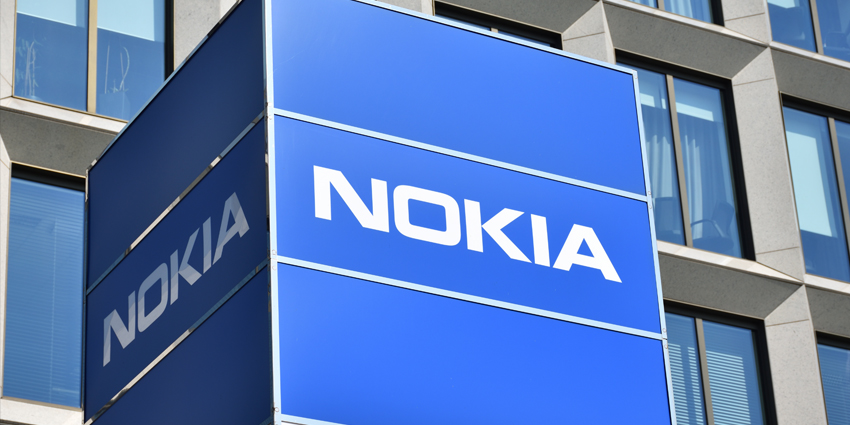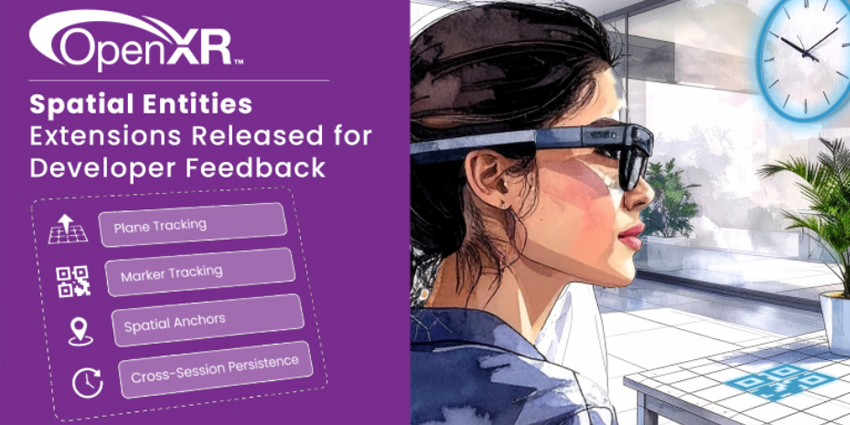In 2023, the Metaverse is a massively trending topic in today’s technology landscape. Alongside emerging AI and IoT technologies, Metaverse service providers are scrambling to innovate to provide enterprise and consumer solutions.
Once exclusive to technology pioneers and data scientists, the Metaverse is expanding to affect everyone. The impact of this environment is evident in everything from the recent success story like the NIKE/Roblox partnership, Meta Horizons, and Virbela.
But what exactly is the Metaverse, where did the technology come from, and how does it change the future of life and work?
Despite the growing popularity of the Metaverse, the concept is still unclear to many. Some also define the Metaverse as interconnected virtual reality (VR) environments for socialization, events, and work.
Although, the Metaverse is also present on augmented and mixed reality (AR/MR) hardware through platforms such as Niantic and STYLY, which promote socially driven immersive content overlaid on the real world.
What is the Metaverse?
The Metaverse is an increasingly complex concept in the digital landscape, promising exceptional opportunities for billions of people via interconnected Web3 services and technology.
Mark Zuckerberg, CEO of leading immersive technology firm Meta, calls the Metaverse an “embodied internet”. It’s something a user can access via VR or AR hardware. Meta debuted the Presence Platform at Connect 2021, which powers AR/MR Metaverse content using the Meta Quest Pro headset.
Research collected by Meta UK’s Future of Work division highlighted how 81 percent of questioned individuals want to work in collaborative environments.
The report claims that roughly 16 percent believe video calls help them feel present in meetings. A further 14 participants thought video conferencing led to greater collaboration with colleagues.
Due to these figures, Meta believes companies should begin investing in XR headsets over laptops.
To go a little deeper, the Metaverse offers a future where we can enjoy a more substantial overlap between our physical and digital lives. At a consumer level, immersive technology companies leverage extended reality (XR) tech, like the iPhone’s LiDAR scanner, to display AR content.
Additionally, many opportunities have arisen for digital artists thanks to NFT and blockchain solutions, enabling content creators to monetize their work on Metaverse service. With the rise of inoperable Metaverse services, users can take their purchased digital goods, such as avatar clothing, and use them across different services.
What are the Core Technologies of the Metaverse?
Many Metaverse groups focus on inclusion and decentralization. It invites us to imagine a world where we can control and access our digital experiences in a flexible environment. As the next stage of the internet, Web3, and therefore the Metaverse, is still in its early stages.
New technologies are continuously enhancing the Metaverse/Web3 environment. The three most common forms of technology associated with the landscape are XR, blockchain, and AI.
Blockchain
No longer just a concept associated with Bitcoin and cryptocurrency, the blockchain is a critical component of decentralization.
In the Metaverse, blockchain promises to give users more control over their online experience and products. Blockchain is already making waves in the Metaverse as a way of investing in and supporting artists through NFTs, smart contracts, and decentralized finance.
Artificial Intelligence
ChaptGPT and similar prompt-based AI services are taking the tech world by storm. Much like the emerging Metaverse, major technology firms are integrating the technology to provide suitable enterprise solutions.
In terms of the Metaverse, conversational AI is already finding a home in Metaverse technology stacks. Firms offer prompt AI services to assist in developing content for immersive platforms. NVIDIA, for example, gives AI content creation tools via its Omniverse suite.
Moreover, firms such as VirtualSpeech are integrating Chat GPT to power immersive training platforms for enterprises.
Improving the link between the physical and digital world requires a certain level of computing sophistication. AI is essential for several metaverse experiences. It can help with natural language processing to ensure our machines and robotics can understand us.
AI also supports computer vision and Simultaneous Location and Mapping technologies, which help machines understand our physical surroundings.
Additionally, AI plays a pivotal role in avatar animation. Emerging tracking technologies enable headsets to translate user face and body movement into avatar animations. Although hand, eye, and face tracking are not perfect. Developers commonly use AI to fill the animation gaps where tracking tech fails to capture user movement.
Augmented and Mixed Reality
Perhaps the most often-mentioned form of metaverse technology mentioned, using AR/MR-ready smartphones, glasses, and headsets, users can interact with immersive elements overlaid in the real world.
Many firms pack geo-tagged AR/MR experiences with social features that enable users to communicate with each other. For firms, AR/MR-based Metaverse experience provides a more engaging and accessible marketing route into shared immersive experiences thanks to its less hardware-intensive requirements.
We can also use MR and AR to bring digital content into the real world, changing how we interact with everything from maps to retail experiences. Firms like Reactive Reality are pioneering AR-ready smart mirrors as an alternative try-on experience. Walmart and Ikea are paving the way for immersive shopping and navigation through easy-to-use mobile applications.
Where is the Metaverse Today?
Industry experts recognize the gaming environment as the “starting point” of the Metaverse. Several games use shared worlds at an unprecedented scale on platforms like VRChat, and gaming is becoming mainstream consumer behaviour, with around 59% of US adults identifying as gamers.
Games are an excellent environment for the Metaverse content because the medium encourages users to immerse themselves in digital worlds and join communities unrestricted by geographic location.
Real-time 3D (RT3D) graphic engines primarily support video game development, although now XR firms widely use these services.
For example, Unreal Engine 5.0 (UE5) tackles the most demanding tasks from RT3D productions by providing 3D designers with tools to create hyper-realistic renders for film, gaming, and XR productions.
UE5 also contains various integrated features that lower barriers to entry by giving no-code options to create immersive Metaverse worlds. Epic Games’ platform also provides tools to develop characters and animations. The firm also released MetaHuman, a purpose-built framework for creating realistic XR avatars.
Recently, significant companies adopted Roblox as a new and engaging advertising opportunity. NIKELAND debuted last year to motivate movement among children and increase brand awareness.
In March 2022, Nike announced that almost 7 million people had visited Nikeland from around 224 counties.
The gaming landscape is already home to user-generated content, virtual goods, and environments. The environment also provides an excellent landscape for developing and testing new technology, like XR mechanics, content moderation, and cryptocurrency.
Social Experiences in the Metaverse
Digital communities have existed for several years beyond the Metaverse – practically since the dawn of the internet. We’ve used everything from online forums and social media platforms to video games to connect with other human beings. Social experiences are some of the most recognizable pillars of the Metaverse, particularly since the pandemic.
Meta built its Horizon Metaverse on three services: Worlds, Workrooms, and Venues. The Menlo Park-based firm unified the services in May to provide users with a digital space to work, play, and socialize.
Horizon uses portals that users enter to access different parts of its Metaverse—additionally, the service feature user-created content, including clothes, games, and environments.
On the other hand, major Meta competitor Pico announced its Metaverse platform for its portfolio of XR headsets. The Bytedance-owned firm is developing Project Pico Worlds, which enables individuals to build their own VR worlds and assets.
Enterprise activities in the Metaverse
The Metaverse’s immersive, fully-accessible, and open nature makes it perfect for recreating critical human interactions. However, it’s worth noting these interactions can go beyond recreation and social events. Companies beginning to look towards a new future for the workplace are also considering how the Metaverse might influence the enterprise.
Many enterprise applications are available for companies that provide incredible virtual environments to build products, test ideas, and innovate with colleagues. Following the pandemic, companies are adopting immersive tools for improving workflows between on-site and at-home employees.
Meta, under its Horizon ecosystem, enables Quest users to access Workrooms, an immersive remote collaboration solution designed for enterprise. Platforms like Engage and Virbela offer persistent Metaverse worlds that simulate real-life offices.
The Metaverse also creates incredible opportunities for online learning and training in the workplace, allowing people to step into unique experiences where they can build muscle memories and new skills.
Media and entertainment in the Metaverse
Since gaming is the ground floor of the Metaverse, it only makes sense that the entertainment and media landscape would benefit from this environment. Entertainment in the Metaverse is already becoming a familiar concept. <Many shared virtual events like concerts and celebrations in environments like Minecraft, Roblox, and similar spaces.
Virtual events in the Metaverse won’t just be for the consumer landscape going forward. We’re likely to see several professional groups leveraging the technology too. AR/MR Metaverse services provide an invaluable marketing route for firms. Additionally, geo-tagging technology can replace billboards with easy-to-develop immersive adverts overlaid in urban environments.
The evolution of tools like 5G will be significant in ensuring real-time interactions between in-person and online event-goers. Advancements in wireless telecommunications mean that devices like smartphones and glasses can stream real-time 3D (RT3D) data seamlessly without interrupting a user’s experience.
The Metaverse Economy
One of the most significant opportunities in the future of the Metaverse is the creation of new and improved economies. Already, digital assets marketplaces like Opensea are collaborating with major immersive firms to unite blockchain, NFTs, and crypto into Metaverse services.
Through its Roblox partnership, companies like Nike are debuting digital twins of new shoes that players can attach to an in-Metaverse avatar. Fashion firms also use digital twins as digital receipts, ensuring buyers can claim high-demand real-life products.
Many firms in the digital real-estate market are expanding into the Metaverse economy. Companies are securing digital Metaverse land, including the Sandbox, to engage with digital customer relations and host events or showcases.
Is the Metaverse Sustainable?
The Metaverse is already an incredible and exciting opportunity for many. Analysts say it will create opportunities for new economies, working environments, and chances to connect remotely. However, like any technology, the Metaverse requires careful consideration and implementation to be sustainable.
The foundation of the Metaverse replies to concepts such as:
- Data sovereignty, privacy, and governance
- Diversity and inclusion
- Universal, open, and interoperable environments
- Decentralization and global governance
- Accountability and transparency
Values and Standards
The Metaverse’s future relies on specific guidelines to ensure long-term benefits. For instance, the end of the Metaverse must be:
- Environmentally conscious: The technology we build in the Metaverse can help create positive changes and opportunities to protect the planet. However, we need to ensure any investments made into this technology consider the environment’s needs. For instance, companies may need to consider how they will power the data centres responsible for metaverse environments.
- Socially ethical: A central concept of the Metaverse is that the digital world should be accessible and open to everyone. No single company should have complete control over the Metaverse. We should all have a voice and equal respect in the Metaverse.
- Economically sound: As the world continues to grow and evolve, the Metaverse also needs to support the development of new economies and the continued success of existing environments. A robust metaverse landscape shouldn’t just benefit one section of the community economically but provide equal opportunities for everyone.
How Do We Build an Ethical Metaverse?
Much of what makes the Metaverse and Web 3.0 so appealing is the idea of transparency and decentralization. The Metaverse also relies on decentralized and distributed ledgers, allowing transactions to be verified.
Outside of being transparent and honest, the Metaverse of the future will need to be:
- Inclusive: A defining factor of the Metaverse is it should always be human-centred and diverse. The technologies created in this new landscape must be approachable and easy to understand. The Metaverse will thrive through a diverse selection of creators and developers. Everyone should have a chance to participate in this new world.
- Safe: The Metaverse is already gaining attention as a secure, private, and safe environment for the digital future. Using blockchain and decentralized concepts makes it much harder for fraud and other issues to occur. However, users still need to keep the environment secure and safe.
- Innovative: Like any technology, the Metaverse also should have endless room to grow and develop as we learn more as a species. We’re already seeing endless new opportunities for the Metaverse emerging in developing new XR tools and NFTs.
Is the Metaverse a Good Thing?
A Metaverse is where users can effectively learn, build, play, communicate, and collaborate with anyone. Simultaneously, it makes the world smaller by connecting us regardless of geographical location and, more significantly, allowing more opportunities.
The Metaverse brings humans together like never before, with new opportunities to connect regardless of language differences or location. Moreover, it could start new environments where we can build new economies based on shared value distribution.
Additionally, Metaverse firms say the transition marks a new era where people create experiences in an ever-more accessible landscape.
However, there are potential issues to address with the Metaverse, like the risk of crime in a decentralized world. It’s up to us as a species and global community to use the possibilities of the Metaverse for good.
If we focus on a metaverse that’s for everyone and accessible to anyone, the environment can be a good thing. This new technological innovation is just another tool for a brighter future – it’s up to us how we use it.







